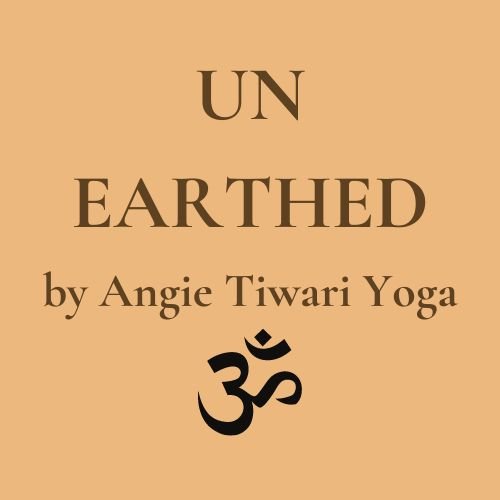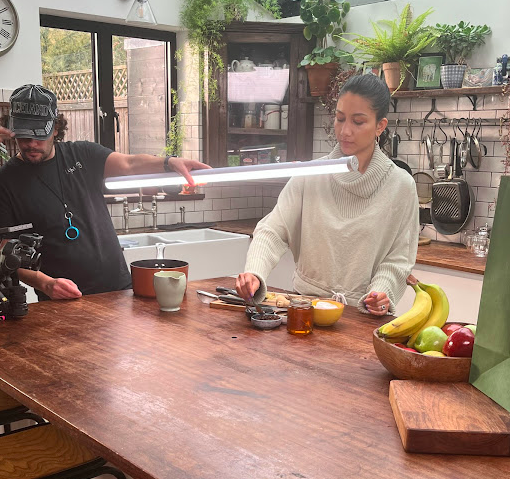My Perfected Chai Recipe
Over 2020, with no knowledge of when I’d next be able to go to India, I found myself slowly but very surely gravitating towards things that made me feel more connected with my rich heritage. I have been visiting India every year or every other year for my entire life. Not knowing when the next trip would be made me cling to what I could do in the U.K that would make me feel as though I was there. Those things included lots more yoga, deep meditation, watching Bollywood for the first time in my life, AND making chai. When the lockdown lifted, every friend who came to my house would experience my chai, with one friend saying, “that’s like a meal in a mug!” The chai latte you get in a chain of coffee shops is so very different to authentic masala chai. It’s a lot sweeter, as often cardamom syrup is used, which totally defeats the purpose of the use of cardamom which is to obtain it’s antioxidant healing benefits.
I put my chai recipe under LOTS of tests to get the perfect flavour. Trust me when I say I had moments of disgust and having to spit it out from an overuse of clove…but I feel confident that today my chai recipe is BOMB. I even got asked to make chai on a campaign I worked on with UberEats, LadBible and Big Zuu (and taught him why saying chai tea doesn’t make any sense!)
This is seriously the perfect way to warm yourself mentally, spiritually & physically. The spices we use have incredible healing properties, from being antibacterial, anti-inflammatory, and digestion boosting to creating a warm feeling within you to soothe emotional discomfort. Traditionally chai was made thousands and thousands of years ago as a herbal remedy to boost what is known as ojas (immunity) and agni (your digestive fire). No tea leaves were used. It was apparently the king who wanted the divine caffeine-free chai to be shared to cure the masses with this healing concoction. When the British came to colonise they set up loads of tea farms and this is where the addition of tea leaves into the chai came from. Sadly the addition of tea wasn’t loved by all and it wasn’t affordable to everyone.
Today, you’ll find lots of different variations as the love of chai has spread. There’s no one correct way of making chai, and most families will have their own unique twist. I like a classic of the spices only, but at other times especially when I have guests round, I prefer to add in the milk, the tea leaves and of course a little bit of sweetness (always add your sweetness such as honey AFTER boiling, into the mugs instead of into the saucepan. Ayurveda believes that honey when heated becomes toxic. If you’re vegan, add molasses or jaggery instead as these have the most similar quality to honey🍯
If you don’t have a sweet tooth you don’t need to add anything sweet, but as per Ayurveda, adding something sweet does help the healing benefits and properties off the spices to be carried to the various different parts of your body and the different layers within you. Are you ready?
1 x cinnamon stick
4 cloves
1 tsp black peppercorns
10-12 cardamom pods
Chunk of ginger cut into thin slices, as many or few as you want depending on how fiery you want it
2 x tea bags
Honey/molasses/jaggery
Cow’s milk/oat/soya milk
600ml water
Optional: a few star anise
Method
Crush all spices in a pestle and mortar and add to your saucepan. Crushing will help release the flavour. In your saucepan add water. You can add pre boiled kettle water if you don’t have much time, but I advise adding cold to ensure the flavours truly infuse with the water as it boils.
Leaving your chai alone means probably coming back to a kitchen with chai all over the counters! Yes…I’ve done it. Be near your chai and watch it bubble. It will turn brown. After 10 minutes bring the heat up even more, until it bubbles to the surface, then reduce it down. Do this 3 times. This is what my Mum taught me and I do it every time for luck! Once it’s been on boil for 10-15 minutes, reduce it all the way down to simmer.
Add your milk. Avoid using coconut milk as this is powerful in taste and is likely to overpower the chai. You’ll lose the lovely chai flavour. Leave on simmer for another 5-10 minutes. The longer you leave it, the richer your chai will taste. When you’re ready, carefully pour your chai through a strainer into mugs, and do not leave the chai on the hob. Strain all of it out even if you won’t be drinking it all there and then. The remainder can be poured into a flask and kept aside. You can drink this up to 3 days afterwards, but it’s so good I doubt you’ll leave it that long!
Add your sweetness. Honey, molasses or jaggery are good options. Avoid maple syrup for the same reason we avoid coconut milk. Add to the mugs rather than to the pan. Drink with awareness, pause, find gratitude and take slow sips with your eyes closed. Appreciate the flavour, the time and love that you’ve poured into making this.
I love hearing when you’ve made this so feel free to share your creations with me tagging @tiwariyoga so I see it on socials! Happy chai making.
Love,
Angie



